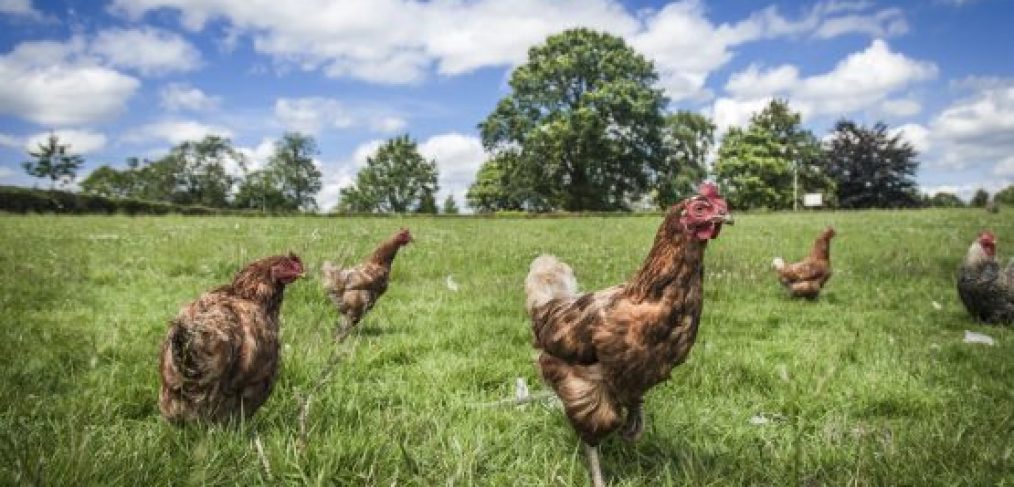Where Did That Chicken Come From?

“It came from Whole Foods and it is free-range, so that’s good, right?”, was the question asked of me by a new client at a recent cooking lesson.
If only it were that simple.
Free-range sounds great, but what does it really mean?
Sadly, not that much.
According to the USDA (1), “FREE RANGE or FREE ROAMING means that producers must demonstrate to the Agency that the poultry has been allowed access to the outside.”
How much access?
We don’t exactly know.
According to Wikipedia (2) , “A behavioral definition of free range is perhaps the most useful: “chickens kept with a fence that restricts their movements very little.”
Once again, another example of how we cannot make assumptions that what we are buying is what we hope it might be.
Imagine being able to walk into any grocery store, not just a high-end heath store or farmer’s market, and being able to shop with confidence, knowing that all the fish you were buying was wild-caught and local, all your meat was 100% grass fed and all the poultry was pasture-fed?
Until that time, we’ve got to do the same thing when sourcing our proteins as we do with everything else we choose to put in or on our bodies: we have to become detectives and educate ourselves.
One great option for safe, reliable sourcing of proteins is to head to your local farmer’s market.
When I’m having a conversation with the guys from Wild Local Seafood at the Wednesday Santa Monica Farmer’s Market who caught the fish I’m about to buy from their cooler yesterday or the rancher at the next both from Jiminez Farms who raised his pigs in pasture, and they’re looking in my eyes and we’re having an honest conversation about the humane manner in which they conduct their business, I believe them.
And this is what we all have to do, whether we’re talking about fish, chicken or beef, as well as organic vegetables that we can buy from local suppliers when they’re in season, rather than being greedy and deciding we must have blueberries in December that came from Chile.
It’s not until we all begin to make the shift to support the providers who are doing things the way nature intended that we will start to see pricing be such that more people can afford it.
This, in keeping with gleaning a better understanding that we don’t actually have to eat a high protein diet (pile on the local veggies and fat, guys!), that we can grasp the concept that even though the wild salmon may be $28/ pound we don’t need a 1/2 pound for ourselves at a single meal.
A little goes a long way and, for example, if you’re following a higher fat approach to eating, that one pound of salmon can be portioned out, frozen if need be and made to last several meals.
But what if you don’t have a farmer’s market to call your home base?
A few things can stand in its proxy.
1 ) Eatwild.com is a great nationwide directly listing farmer’s markets as well as individual suppliers of organic produce as well as grass fed meats, pasture fed poultry and wild caught fish across the US.
2 ) Check to see if you can opt in for a CSA in your area. For over 25 years, Community Supported Agriculture (CSA) has become a popular way for consumers to buy local, seasonal food directly from a farmer. Check out Local Harvest (5) as a great resource: https://www.localharvest.org/csa/
3) Grocery Stores. Whole Foods is a weekly stop in my routine. Yes, you can go terribly wrong, just like at many grocery stores, but if you take a moment to read the labels on the produce, you can stay local and organic. Same thing with the seafood as well as the meat and poultry. Whole Foods is interesting in that they use the 5-step system from the Global Animal Partnership, a nonprofit organization dedicated to continually improving the lives of farm animals through their 5-Step® Animal Welfare Rating system (5). Awareness is the first step, then making the best choice you can out of the options available to you is key.
I often speak about how once I realized that the core reason I was so, so sick for so, so long was largely due to eating gluten (gluten in the form of whole wheat bread my mom was baking, by the way), despite the ‘knowledge’ that whole wheat products were purported to be a great source of B- vitamins and fiber all that time, it opened what felt like the proverbial Pandora’s Box.
What else might I be eating, thinking it’s a good part of a healthy diet, that might actually be working against me on my path to optimal health and longevity?
For me, this was the first glimpse that I needed to take matters into my own hands, do as much digging as it took, keep learning from what may have been viewed as ‘alternative’ sources and keep trying until I figured out my own puzzle.
We all need to do this.
Since we can’t, at this moment, make grand assumptions that we can trust food labels, we’ve simply got to take the extra step in order to assure we’re getting the real information and can then make the best informed decision not only about who and what we choose to support, but what we are putting in our bodies.
It’s the only way to create a healthy future with promise for ourselves, our animals and our planet.
“Meat and Poultry Labeling Terms.” Meat and Poultry Labeling Terms. USDA, n.d. Web. 16 Apr. 2017.
https://en.wikipedia.org/wiki/Free_range
https://www.localharvest.org/csa/
http://www.globalanimalpartnership.org




